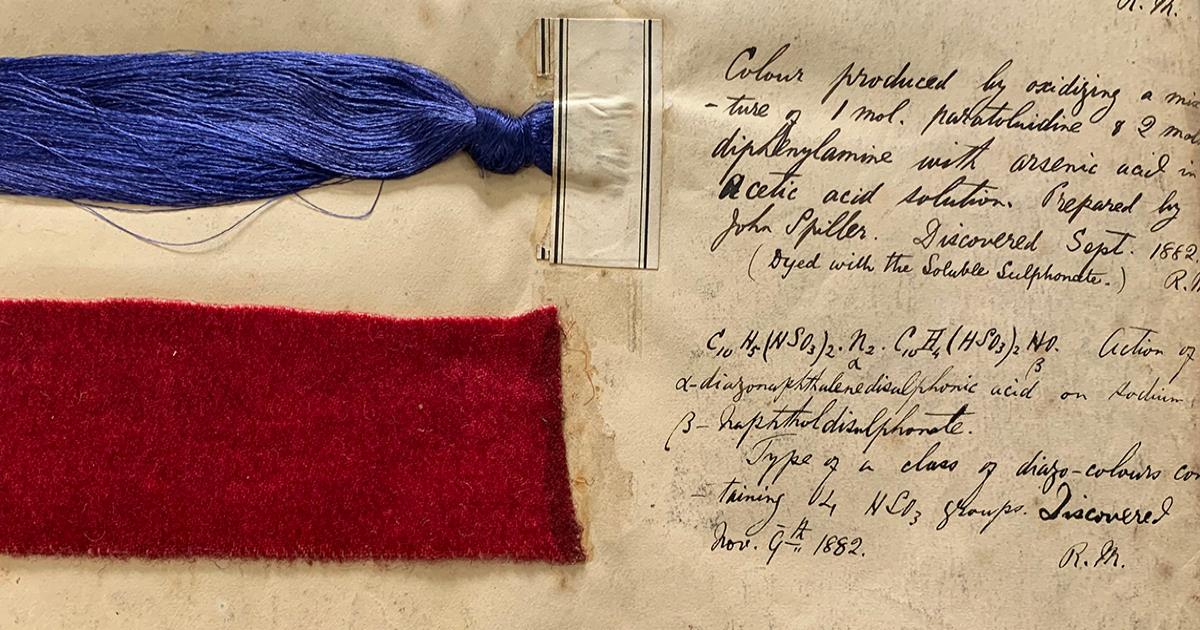Dyes in History and Archaeology 43
A special issue of Heritage (ISSN 2571-9408). This special issue belongs to the section "Museum and Heritage".
Deadline for manuscript submissions: closed (30 June 2025) | Viewed by 31521

Special Issue Editors
Interests: pigments; paints; dyes; art history; artists materials; paint technology
Special Issues, Collections and Topics in MDPI journals
Interests: colours and colourants; pigments; dyes; textiles; sculpture; ancient painting techniques and craft practices; noninvasive techniques; multispectral imaging
Special Issues, Collections and Topics in MDPI journals
2. Society of Dyers and Colourists, Bradford, UK
Interests: natural dyes; mordants; natural dye history; colourants; textiles; cotton
2. Conservation and Restoration of Cultural Heritage, Amsterdam School for Heritage, Memory and Material Culture (AHM), Faculty of Humanities, University of Amsterdam, P.O. Box 94552, 1090 GN Amsterdam, The Netherlands
Interests: dyes; organic pigments; analytical chemistry; degradation research; reconstructions
Interests: natural dyes; historical reconstructions; analytical techniques
Special Issues, Collections and Topics in MDPI journals
Interests: dyes; textiles; amber; paint; archaeological residues; pyrolysis; gas chromatography-mass spectrometry
Interests: organic materials; chromatography; mass spectrometry; dyes; textiles; archaeological wood; Asian lacquers; Oriental art
Special Issues, Collections and Topics in MDPI journals
Special Issue Information
Dear Colleagues,
This Special Issue features contributions from the conference DHA43. Dyes in History and Archaeology (DHA) is an annual international conference that focuses on the academic discussion of dyes and organic pigments used in the past. Every year since 1982, this meeting draws together conservators, curators, (technical) art historians, craftspeople, artists, scientists, and academics from museums, universities, research centres, and other public or private institutions. The aim of the conference is to bring these specialists together to delve deeply into the history, production, application, and properties of organic colourants, as well as their analytical characterization and identification. The focus is often on textile objects, but also on other substrates as well as painted surfaces.
The 43rd annual meeting was hosted in Leeds by the Society of Dyers and Colourists.
For more information about future meetings of the Dyes in History and Archaeology group, see https://www.dyesinhistoryandarchaeology.com.
Dr. Jo Kirby
Dr. Joanne Dyer
Debbie Bamford
Dr. Maarten R. van Bommel
Dr. Paula Nabais
Jennifer Poulin
Dr. Diego Tamburini
Guest Editors
Manuscript Submission Information
Manuscripts should be submitted online at www.mdpi.com by registering and logging in to this website. Once you are registered, click here to go to the submission form. Manuscripts can be submitted until the deadline. All submissions that pass pre-check are peer-reviewed. Accepted papers will be published continuously in the journal (as soon as accepted) and will be listed together on the special issue website. Research articles, review articles as well as short communications are invited. For planned papers, a title and short abstract (about 250 words) can be sent to the Editorial Office for assessment.
Submitted manuscripts should not have been published previously, nor be under consideration for publication elsewhere (except conference proceedings papers). All manuscripts are thoroughly refereed through a single-blind peer-review process. A guide for authors and other relevant information for submission of manuscripts is available on the Instructions for Authors page. Heritage is an international peer-reviewed open access monthly journal published by MDPI.
Please visit the Instructions for Authors page before submitting a manuscript. The Article Processing Charge (APC) for publication in this open access journal is 1600 CHF (Swiss Francs). Submitted papers should be well formatted and use good English. Authors may use MDPI's English editing service prior to publication or during author revisions.
Publisher's Notice
As stated above, the central purpose of this Special Issue (SI) is to present research from the “Dyes in History and Archaeology 43” conference. With this goal in mind, the Guest Editors’ contribution to this issue may be greater than typical SIs published by MDPI. Further details on MDPI's Special Issue guidelines can be found via the following link: https://www.mdpi.com/special_issues_guidelines. Heritage’s Editorial Office and Editor-in-Chief have approved this, and MDPI’s standard manuscript editorial processing procedure (https://www.mdpi.com/editorial_process) will be applied to all submissions. As per this procedure, Guest Editors are excluded from participating in the editorial process for their submission and/or for submissions from persons with whom a potential conflict of interest may exist. More details on MDPI’s conflict of interest policy for reviewers and editors can be found at https://www.mdpi.com/ethics#_bookmark22.
Keywords
- dyes
- colourants
- organic pigments
- mordants
- archives
- crafts
- industry
Benefits of Publishing in a Special Issue
- Ease of navigation: Grouping papers by topic helps scholars navigate broad scope journals more efficiently.
- Greater discoverability: Special Issues support the reach and impact of scientific research. Articles in Special Issues are more discoverable and cited more frequently.
- Expansion of research network: Special Issues facilitate connections among authors, fostering scientific collaborations.
- External promotion: Articles in Special Issues are often promoted through the journal's social media, increasing their visibility.
- Reprint: MDPI Books provides the opportunity to republish successful Special Issues in book format, both online and in print.
Further information on MDPI's Special Issue policies can be found here.











